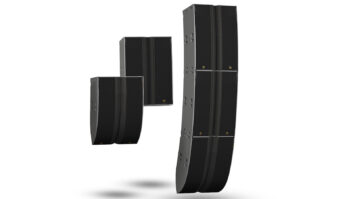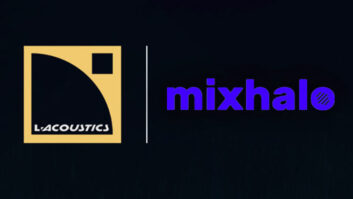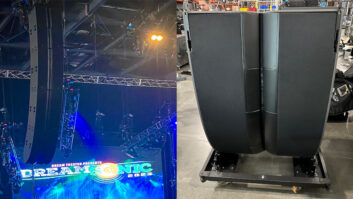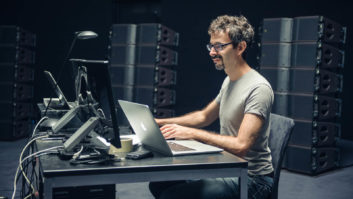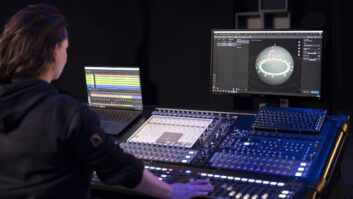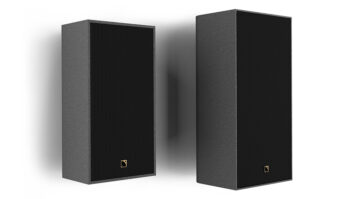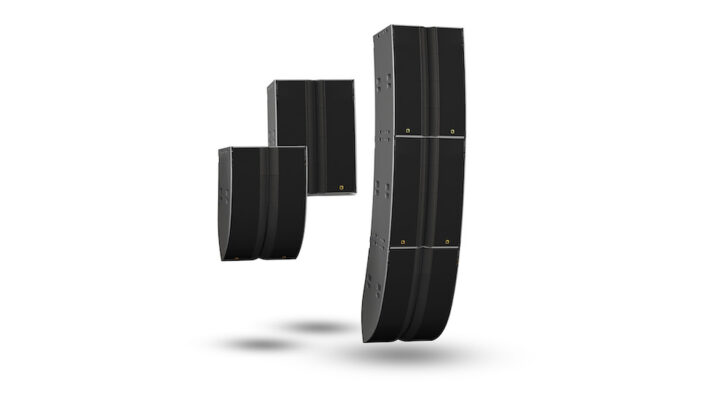
This article originally appeared in the September 2023 issue of Mix. Innovations is a monthly column in which different pro audio manufacturers are invited to discuss the thought process behind creating their products of note. Germain Simon and Scott Sugden are L-Acoustics’ Directors of Product Management.
When the L Series loudspeaker system was unveiled at our Hollywood Bowl Keynote in April, much attention was directed to its efficiency and environmental friendliness. For example, we pointed out that one L2 or L2D element provides the same contour as four K2 elements in a format that is 46% smaller and 40% lighter. We also compared its material savings to an equivalent line source array—56% less paint, 30% less wood, and 60% less steel—plus L Series clocks in at 30% less volume and 25% less weight for unparalleled logistics. As impressive as those stats are, however, the genesis of L Series, which goes back more than five years, was principally focused on designing the next leap forward in audio quality. The fact that we ended up creating the industry’s greenest, lightest, most efficient and fastest-to-deploy system was all secondary in our quest to deliver the best sound.
With V-DOSC in the ’90s, L-Acoustics introduced the modern line array concept; three decades later, this technology is still the standard for live events worldwide. Today, employing the patented new Progressive Ultra-Dense Line Source (PULS) technology, L Series is a breakthrough concept in concert sound made possible through 30 years of intensive R&D in software modeling, loudspeaker technology and electronics. We analyzed hundreds of projects using line source arrays across all genres and venues and realized that most audience geometries and array shapes followed a similar trend. This led to the understanding that a fixed element with predefined progressive angles— rather than a variable or constant curvature design—would provide incredible gains in quality, efficiency and sustainability.
Dream Theater Takes L Series System on Tour
L Series can start with just one L2D enclosure, and to accommodate larger and more complex room geometries, L2 and L2D elements can be arrayed together with one, two, or three L2 above the L2D to create up to 90 degrees of progressive vertical coverage. The new system improves the sound quality for audiences by minimizing or eliminating the modulations and variations typical of line sources. However, the real “win” is the reduction of the energy in the off-axis area. That challenge arose with the rise of L-ISA immersive technology, where arrays are typically smaller and positioned directly above the objects making the sound. The lack of consistency and stability in the line source, below and above, directly contributed to gain before feedback when an array is placed above the performing orchestra, band or singer. When the arrays are 50% taller and far to the sides, gain before feedback doesn’t usually pose a challenge. With the development of the L Series, the stability in audience coverage and the stability of rejection that creates the best sound were driven by the needs of emerging immersive technologies.
PULS technology provides full-bandwidth control in both the vertical and horizontal planes. For that, L Series leverages two patented techniques: The first is Panflex, which provides sound designers with quick access to a choice of four mechanically-adjustable horizontal directivity patterns—70° or 110° symmetrical, or 90° asymmetrical on either side. Each L2 element includes four Panflex modules, while L2D contains two Panflex modules on the top elements and two fixed L-Fins progressing from 110° to 140° on the bottom elements. L Series also employs the patented Integrated Cardioid technique to control the low-frequency domain in the horizontal plane without compromise, and offers users a choice of cardioid or supercardioid patterns. Installed behind a cardioid waveguide are four 12-inch drivers in both L2 and L2D. The drivers modify the output of those drivers to exit not from the side but from the front and rear of the enclosures. This unique design results in a perfect summation in the front but gives users more than 20 dB of rejection behind the array, from 200 Hz and below.
Equally important to the sonic success of L Series is the new LA7.16 high-resolution amplified controller, which supports L2 and L2D with 16 channels of high-power amplification and processing—meaning each driver in the enclosure is independently amplified and processed. LA7.16 comes in a new LA-RAK III touring rack offering 48 channels of amplification in a Milan AVB-ready package with more than 60,000 watts of power in just nine rack spaces. Leveraging the high-resolution amplification of LA7.16 and the advanced L-Acoustics Autosolver tools, the L Series output can be perfectly modulated to achieve results that are impossible with traditional line array technology. All it takes is just one listen to realize that, with L Series, L-Acoustics has truly pushed line array technology into the future once again.


